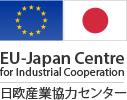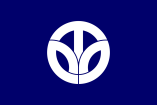As 3rd largest economy in the world, Japan represents a strategic interest for EU companies. The country has the second highest spending worldwide on R&D, and its companies remain amongst the most valuable and technologically advanced in the world.


Culture

Prefecture flag
Main City: Nagoya

Prefecture flag
Main City: Akita

Prefecture flag
Main City: Aomori
In order to successfully build a network of Japanese colleagues, proper observance of Japanese business protocol is vital, as one significant faux pas could offend your prospective business partners and cost you a lucrative business opportunity.

Prefecture flag
Although the Chubu area only comprises about 10% of the national area in geographical terms, it accounts for 20% of the nationwide share in shipments of manufactured goods and is a catalyst driving Japanese economy with its manufacturing base.
The Chugoku Region is located in the western part of Japan. It borders the regions of Kyushu, Shikoku and Kansai, making it a transportation hub for all of western Japan.
— Latest update: May 2025 —
There is no precise definition of creative industries in Japan.
There are countless cross-cultural issues to be aware of when doing business in Japan. This section provides a very brief overview of certain important issues that you will come across.
Adapting your professional etiquette to the Japanese business environment may seem like a daunting task! We have therefore provided you with this handy list of "Do's and Dont's" which you can easily memorise for your business dealings with or in Japan.

Prefecture flag
Main City: Fukui

Prefecture flag

Prefecture flag

Prefecture flag
Main City: Gifu

Prefecture flag










